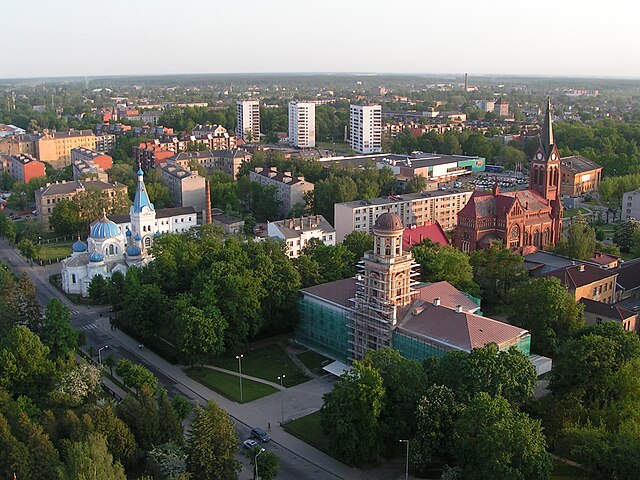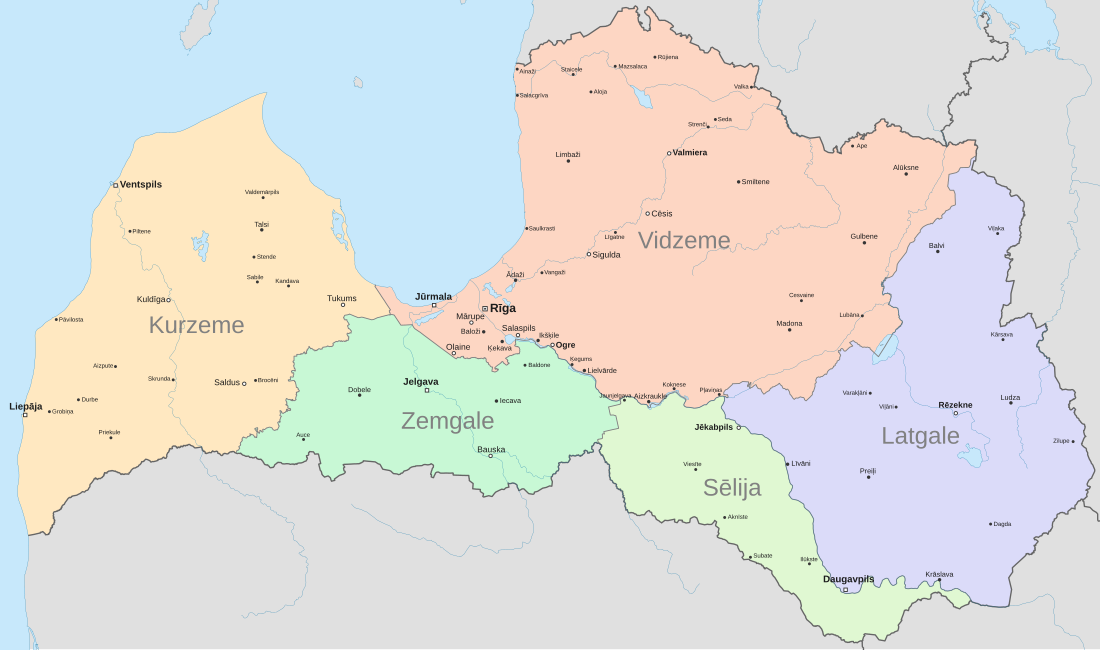There are 10 cities (Latvian: valstspilsēta, "state city", pl. valstspilsētas) and 71 towns (Latvian: novada pilsēta, "municipality town", pl. novada pilsētas) in Latvia.

By Latvian law, towns are settlements that are centers of culture and commerce with a well-developed architectural infrastructure and street grid, and have at least 2,000 residents. A settlement can still be designated a town if it has fewer residents, but fulfills all other requirements (or has been a historic town).
To become a city, a town must typically have at least 25,000 residents. Additionally, cities should have a well-developed commercial district, transport, public utilities, social infrastructure, and be a significant center of culture. However, these requirements may be disregarded if there is sufficient population.[1]
In 2020, an agreement was reached in Latvian parliament, Saeima, to rename the previous nine "republic" cities with the new title of "state city" (valstspilsēta). It was at this time that a tenth state city, Ogre (formerly a town), was added to the list.[2]
The 7 largest state cities have their own local governance independent of any municipalities, whereas the smallest 3 (Jēkabpils, Ogre and Valmiera) belong to their wider corresponding municipalities.[3]
State cities







| City | Population (2013)[4] | Population (2019)[5] | Population (2024)[6] |
|---|---|---|---|
| Rīga ⓘ |
658,640 | 632,614 | 605,273 |
| Daugavpils ⓘ |
93,312 | 82,604 | 77,799 |
| Liepāja ⓘ |
76,731 | 68,945 | 66,680 |
| Jelgava ⓘ |
59,511 | 55,972 | 54,701 |
| Jūrmala ⓘ |
50,840 | 49,325 | 52,154 |
| Ventspils ⓘ |
38,750 | 34,377 | 32,634 |
| Rēzekne ⓘ |
32,328 | 27,820 | 26,131 |
| Ogre ⓘ |
26,167 | 24,768 | 22,767 |
| Valmiera ⓘ |
25,130 | 23,125 | 22,376 |
| Jēkabpils ⓘ |
24,635 | 22,076 | 21,150 |
Towns
See also
References
External links
Wikiwand - on
Seamless Wikipedia browsing. On steroids.
















































































